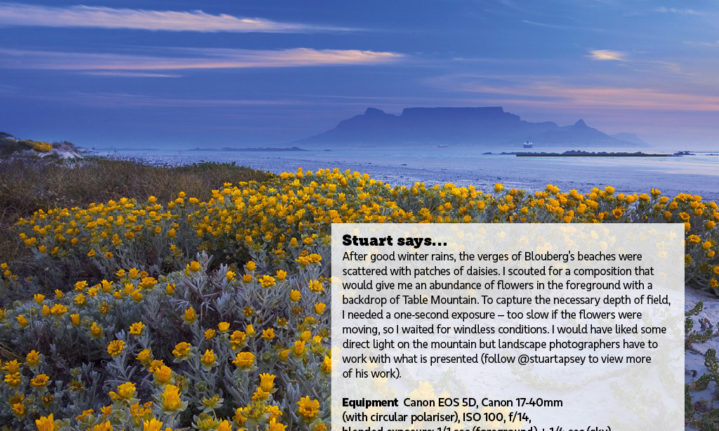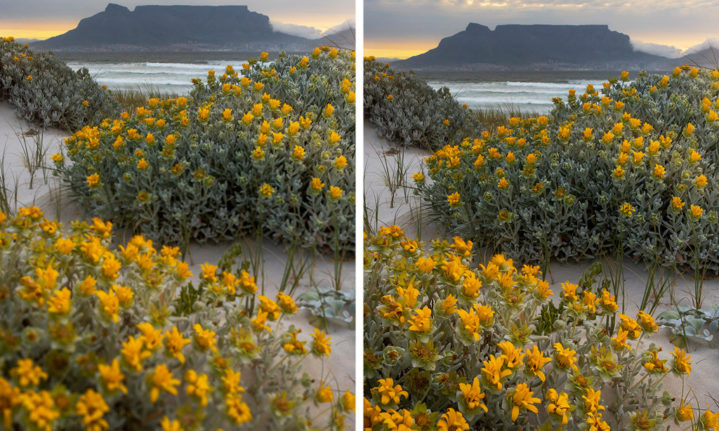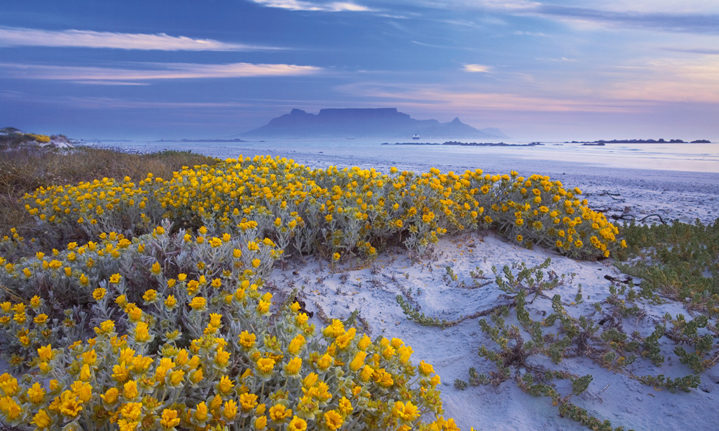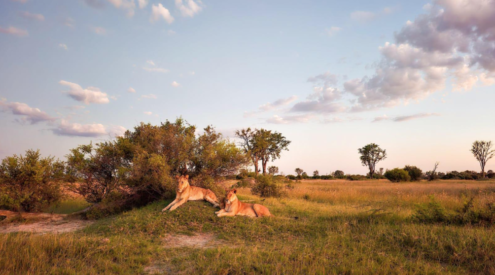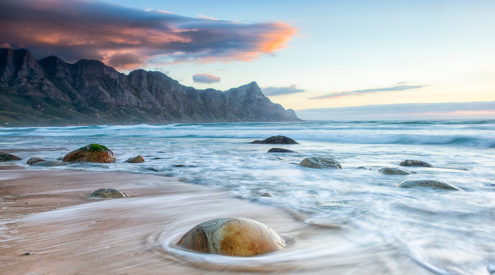The countryside is popping with floral colour. GARETH VAN NELSON looks at how to include spring blooms in your landscape shots, using this image by photographer STUART APSEY
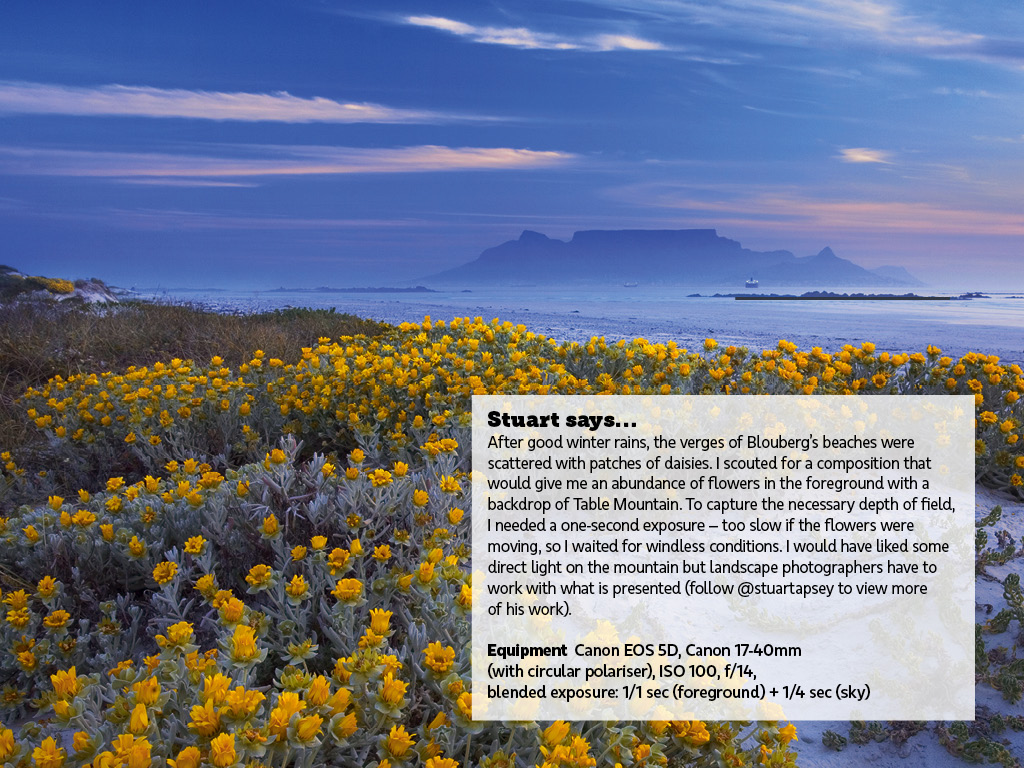
STUART’S TIP Add value to your flower image by including interesting subjects in the background. Mountain peaks, big trees or an old farmhouse work nicely.
Take it Yourself
Controlling depth of field is key for landscapes, so you will be shooting at slow shutter speeds
Equipment
A tripod (and preferably a cable release) is imperative for super-crisp images at slow shutter speeds.
For landscape shots, you need a wide-angle lens such as 16-35mm, 17-40mm, 24-70mm or 24-105mm.
A circular polariser is useful for adding contrast to your image, and reducing glare when shooting into the light (often the case with flowers, or if you have light bouncing off leaves or wet rocks). Graduated filters give you additional control over the overall exposure.
Settings
For the greatest depth of field, use a small aperture, from f/11 upwards, for the overall image. Set the ISO to 100. If using focus stacking (see ‘Know Your Stuff’ overleaf), open the aperture wider when shifting focus to the foreground, and increase the shutter speed to compensate for any movement in the flowers. Repeat this with other areas of the image you would like to keep very sharp. The more frames you have for the focus stack, the better.
Practical
Watch the wind. For crisp flowers as well as an in-focus background, shoot on windless days. The only option on windy days is to use focus stacking.
Shoot flowers backlit. It makes the colours pop with light flowing through them.
Don’t let flowers be distracting or overpowering. Your eye must still flow through a landscape image with ease. A pathway can create lovely leading lines.
Many flowers close when the light gets low. While first and last light are the best times for landscape photography, it won’t always work when incorporating flowers. But there is a small window of late-afternoon ‘golden hour’ when spring flowers such as daisies are still open, and the likes of arum lilies don’t close at all.
Starter Tip
Try different focal lengths to shoot flowers, and change your angle (shooting from the ground up or from above) to get different perspectives.
Amateur Tip
Use the tools: filters will even out your exposures, circular polarisers will remove glare, and the mirror lockup function (which eliminates excess camera movement) will keep images super sharp.
Use a shutter-release cable or the camera’s timer function to activate mirror lockup.
Pro Tip
At the location, take your time to get all the right focus points and exposures for focus stacking. Have a look at the old zone metering system developed by Ansel Adams back in the days of film photography. mccannimaging.com
Know your stuff
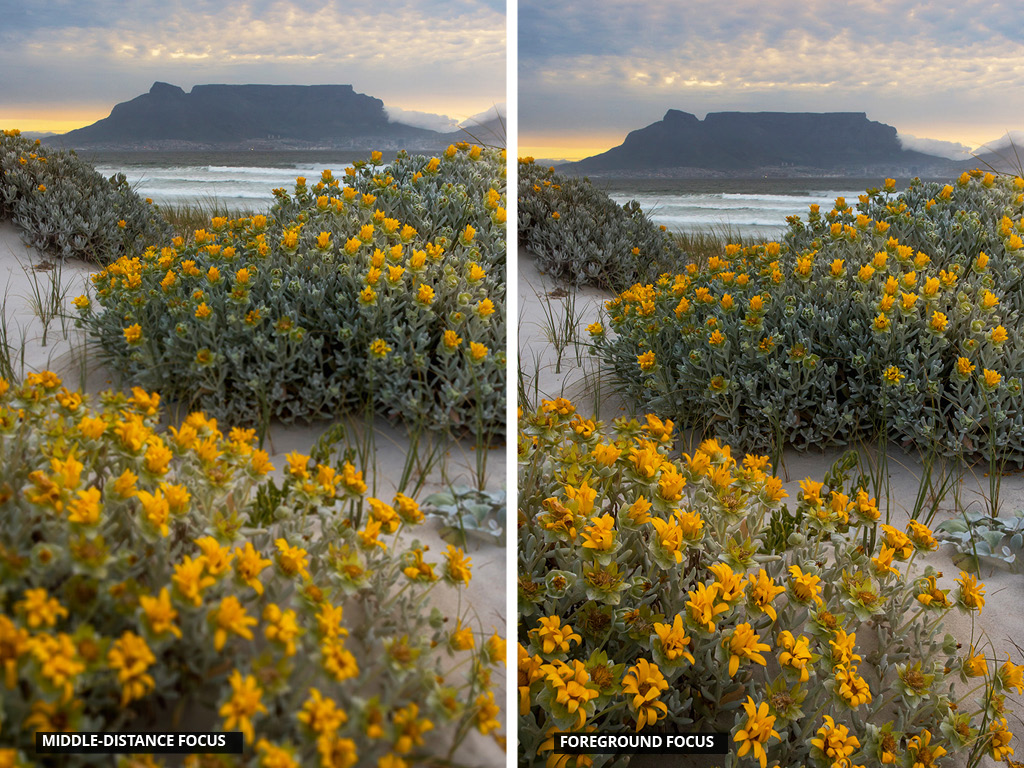
Focus stacking for crisp images
By using this technique of shooting multiple exposures and combining them in post-production, your final image will have a vast depth of field – impossible to achieve with a single image, even with a small aperture like f/16.
Shoot on a tripod with a wide-angle lens and small aperture (f/11 to f/16) for your overall image. Then focus on the foreground (open up the aperture to around f/2.8 to make it very sharp), and take a shot. Shift the focus point further away and take another shot, and so on until you have a pin-sharp image of each area of your overall image. The balancing of these images will take practise, and the more you attempt this technique the better you will get at it.
The multiple images can then be merged in post-production. Photoshop has plenty of ways to do it but the easiest is as follows: select the correct images, open them up and load all the layers onto one canvas. Then select all the correct layers and push edit-auto-align, and then edit-auto-blend. Photoshop will automatically know where all the points of focus are and will blend them correctly, giving you a photo-stacked image.
For examples of landscapes that are beautifully sharp throughout, look at Marc Adamus’s work. marcadamus.com









